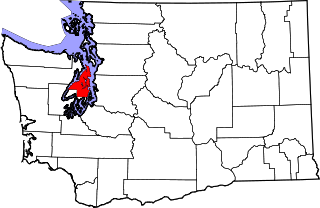In 1990, the Washington state legislature passed The Growth Management Act, codified into RCW 36.70A to manage growth by identifying and protecting critical areas and natural resource lands, designating urban growth areas, preparing comprehensive plans and implementing them through capital investments and development regulations.
 Kitsap County is the third most densely populated county in the state and has adopted a number of important policies to protect the watershed including the Critical Areas Ordinance (CAO), the Surface and Stormwater Management Program (SSMP) as well as zoning designations aimed at reducing watershed impacts through low-density development.
Kitsap County is the third most densely populated county in the state and has adopted a number of important policies to protect the watershed including the Critical Areas Ordinance (CAO), the Surface and Stormwater Management Program (SSMP) as well as zoning designations aimed at reducing watershed impacts through low-density development.
The Critical Areas Ordinance supplements development regulations outlined in the Kitsap County code and requires additional review for land use activities adjacent to or in critical areas. As defined in the CAO, critical areas include the following categories and ecosystems:
- Wetlands
- Fish and wildlife habitat conservation areas
- Geologically hazardous areas
- Frequently flooded areas
- Aquifer recharge areas
The CAO emphasizes a sequence of steps during site development to protect critical areas:
- Avoid impacts to critical areas on the property;
- Minimize impacts to critical areas that cannot be avoided as a result of development; and
- Mitigate impacts, which may occur to critical areas on the site.
To minimize impact to wetlands, streams, lakes, and shorelines, a buffer up to 200 feet is required in addition to a 15-foot building setback. If a development provides the designated buffer, the review proceeds more expeditiously. Moreover, certain uses are prohibited within critical recharge areas. The CAO also requires native vegetation be left in place on steep hazardous slopes; development standards for placement of trails, roads, and utilities in all categories; ratios for on and off-site mitigation; standards for stream crossings; and requirements for supporting technical reports.
Another significant element of the Kitsap County watershed protection effort is the protection of water quality through stormwater management.
Critical Areas Ordinance – website
Downloaded from ResilientWest.org
a project of
Resilient Communities and Watersheds
- State:
- washington
- Scale:
- community, regional
- Type:
- urban

